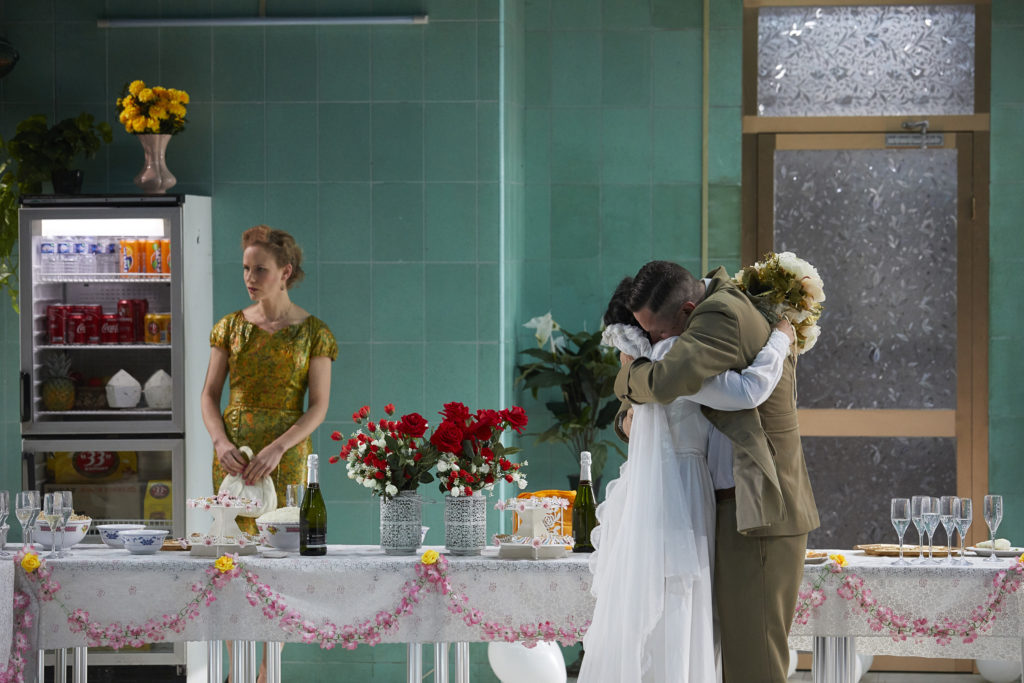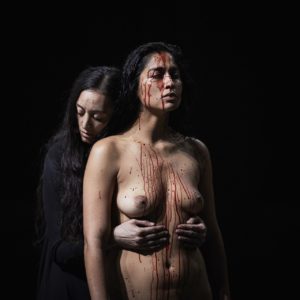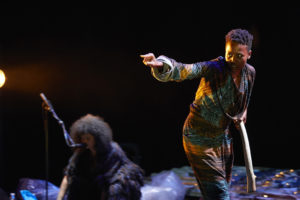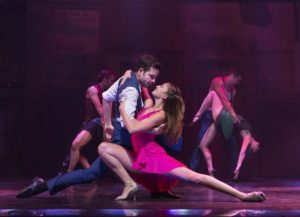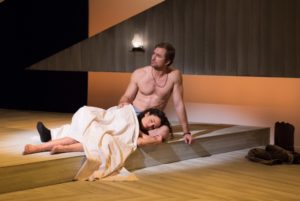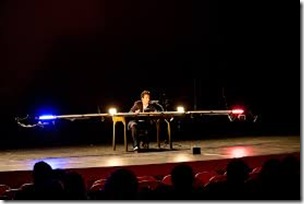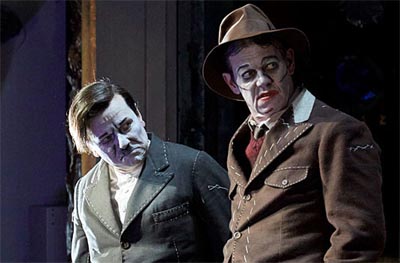Avignon. Antigone. The Symphonies of Pain part 3.
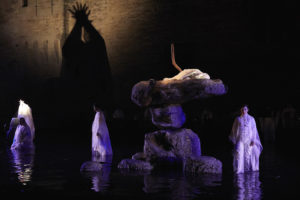
Texte : SOPHOCLE –
Traduction : Shigetake YAGINUMA –
Mise en scène : Satoshi MIYAGI –
Musique : Hiroko TANAKAWA –
Scénographie : Junpei KIZ –
Lumière : Koji OSAKO –
Costumes : Kayo TAKAHASHI –
Coiffure et maquillage : Kyoko KAJITA –
A
Lieu : Cour d’Honneur du Palais des Papes –
Ville : Avignon –
Le 04 07 2017 –
Photo : Christophe RAYNAUD DE LAGE
Antigone by Sophocles, directed by Satoshi Miyagi; music by Hiroko Tanakawa; scenography by Junpei Kiz
Sophocles’ Antigone directed by Satoshi Miyagi and presented at the heart of the Avignon festival, in the Palais des papes, is one more example of a theatre as a symphony of pain.
Antigone – much like the other productions – is also a play about war, injustice and suffering. It concerns the death of a young woman whose personal goal was to bury her brother and put his soul to rest. One of the foundational myths of Western consciousness, in Satoshi Miyagi’s theatrical universe, this Greek tragedy also links the traditions of Japanese Noh theatre and the philosophy of Buddhist monks. …
